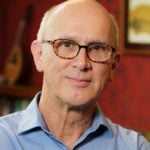
Have you ever come across one of those Protestant sectarians who, finding heretics on all sides, has reduced authentic Christianity to just himself? Everyone else has it wrong—certainly the historic churches but just as certainly the denominations he used to be part of. One by one he became disenchanted with them, serially leaving one church for an even smaller church, until at length it was just himself and another fellow, whom he discovered to be as foul a heretic as he had ever met.
That left our sectarian alone but confident that he had settled in the true religion—confident, but not at peace, because now he saw that the whole world was wrong. He was frustrated that no one saw the truth as he saw it. No one saw the truth at all. “There is none righteous, no, not one” (Rom. 3:10). He didn’t find himself in Thomas Hobbes’ “war of all against all” but in a war of “one against all,” and he was the one.
It made for a lonely life: the crushing burden, knowing that he alone was the carrier of full truth; the sorrow, seeing that no one would follow his lead; the compromises, having to compartmentalize his faith to get by even minimally in society; the sidelong glances that came from one-time friends, the cruel jests from neighborhood children, the incapacity of his own children to see him as he saw himself.
Such is the ultimate Protestant sectarian, the man who has ridden his logic to its limit—where he may be startled to bump into a Catholic analogue, such as Gerry Matatics.
A convert to the Catholic faith from a strict form of Presbyterianism, Matatics went through several subsequent “conversions”: from conservative Catholic to Traditionalist, then to sedevacantist, and now, apparently, to a church of one.
He has a website that, on its main page, has four articles. One has been there, unchanged, since 2009 and two more since 2006. Only one slot has changed with any regularity. It is the slot in which he hawks upcoming audio recordings. His latest offering, posted on January 31, is a series of 25 talks under the rubric “Riding the Train of Truth All the Way to the End of the Line.” He says that the series “enables you to make the case that the authentic alternative to Vatican II Catholicism is NOT the unauthorized, illicit, anarchic, and sacrilegious scene at the chapels served by the illicitly ordained (i.e., in the post-Vatican II era) ‘traditionalist’ priests and bishops, whether of the SSPX, SSPV, CMRI, or independent variety.”
(In case these acronyms are unfamiliar to you: SSPX is the Society of St. Pius X, the Lefebvrist group; SSPV is the Society of St. Pius V, a sedevacantist offshoot of the SSPX; CMRI is the Congregation of Mary Immaculate Queen, a sedevacantist group started by illicitly ordained bishop Robert McKenna.)
Matatics used to attend SSPX chapels, but he became disaffected when he concluded that the SSPX wasn’t forthright in condemning the vernacular Mass as invalid. He traced the invalidity to the now-supplanted translation of pro multis as “for all.” That, he thought, made the Mass invalid and those who approved of it, or even tolerated it, heretics. He became a full-blown sedevacantist but soon discovered that each sedevacantist group was wrong too:
“The lack of the necessary mission and jurisdiction (and in some cases, even the lack of validity) characteristic of these pseudo-traditionalist sects (all of which ironically trample upon tradition in the very name of tradition!)—and the dire spiritual consequences of this lack—are fully explained [in his new talks] from Sacred Scripture and Sacred Tradition, from the Fathers and Doctors of the Church, from magisterial teaching, and from canon law.”
Like the Protestant sectarian who became his own church, Matatics did his homework. He investigated the ever-smaller groups he joined or was tempted to join, until he found that none of them would suffice. He holds no grudge against people who still belong to them:
“I don’t question either the intelligence, the sincerity, or the spirituality of those who attend such chapels; I attended them myself, for years, before I researched this matter more carefully. I am quite sure that, for the most part, those who attend such chapels do so precisely because they want to be ‘law-abiding, faithful Catholics during the current crisis.’ Nevertheless, I believe that, objectively speaking, they ought not to be attending them, and that once they are shown the relevant information, those who are of good will—not without an anguished struggle, I’m sure—will realize they can no longer do so.”
They ought not to attend these chapels, just as he does not attend them. They should follow his example and his line of reasoning: There no longer is any chapel worthy to attend. There no longer is a valid episcopacy. There no longer are valid priests. This means there no longer is a Mass. All one can do is to honor one’s Sunday obligation as he does, by staying home and reciting the rosary and other prayers with one’s family. What else is possible in a world where everyone else is wrong? What else is possible when no one else sees the light?
(The image is from the newspaper in Matatics’s hometown of Scranton, PA, and shows him receiving a free cholesterol check at an outdoor health fair in 2011.)



